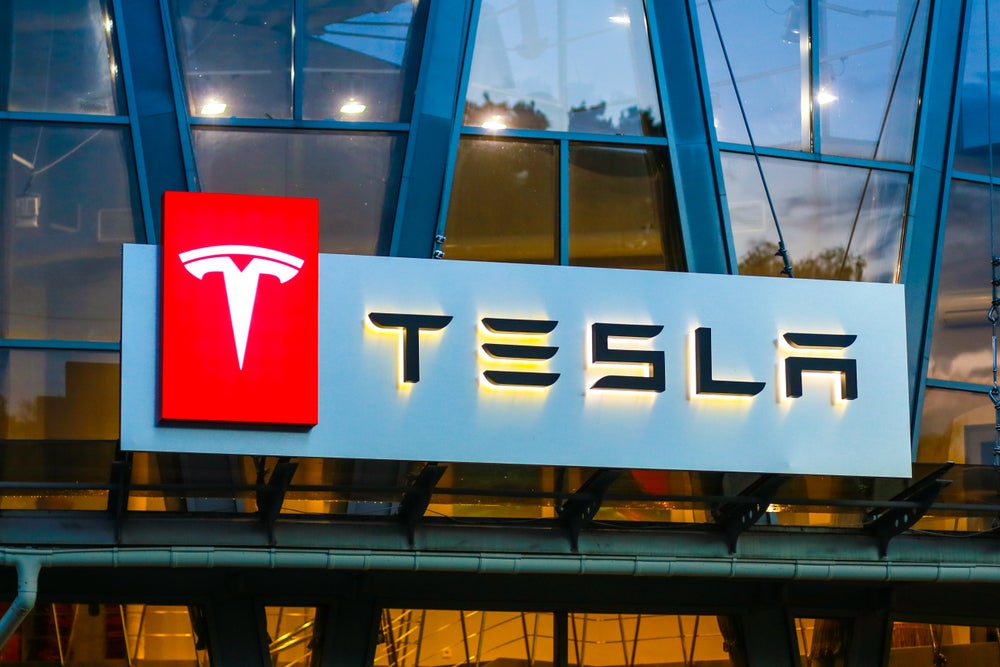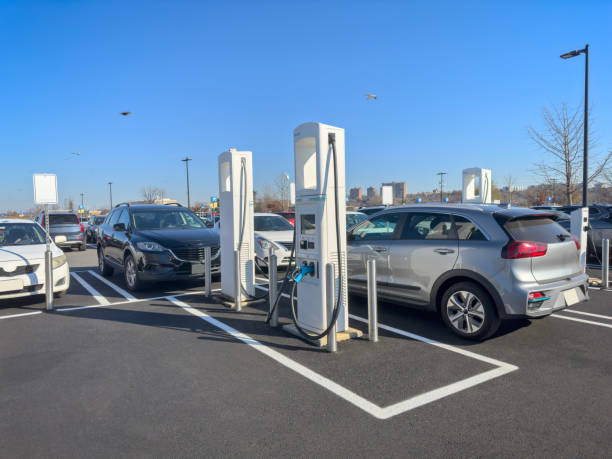
In July, the Robot Football World Cup was held. In the main event competitors used the same robot, but competed with each other using software the teams developed.
The result should not be surprising to any fans of football: the German robots won on penalties. Aside from Germany’s penalty-taking ability clearly transcending the world of athleticism into robotics, the event helped showcase what most car manufacturers now understand: the software of a machine can have almost as much of an impact as the hardware or machine itself.
In the world of cars, the development of software both in the vehicle and outside it has begun to revolutionise what has long been a purely mechanical field.
The results have been the start of a number of mega-trends which will, in the long run, impact almost every aspect of the industry, including finance.
These changes, collectively summed up as the move towards mobility, were the topics of consultant Frost & Sullivan’s Intelligent Mobility 2016 conference, held in London last month.
The day was kicked-off by Sarwant Singh, senior partner at Frost & Sullivan, who outlined some of these mega-trends.
One mega-trend that Singh highlighted was car sharing, which he described as “untapped”, despite a 30% increase in users over the past year to nine million. Ride sharing and e-hailing were also both expected to grow massively, he added.
How well do you really know your competitors?
Access the most comprehensive Company Profiles on the market, powered by GlobalData. Save hours of research. Gain competitive edge.

Thank you!
Your download email will arrive shortly
Not ready to buy yet? Download a free sample
We are confident about the unique quality of our Company Profiles. However, we want you to make the most beneficial decision for your business, so we offer a free sample that you can download by submitting the below form
By GlobalDataA number of technological developments were fuelling this, with mobile computing and connectivity first among them. The progression of mobile internet, from 1G, with 50Kbps speeds to the upcoming 1Gbps bandwidth capacity of 5G, along with its target of less than one millisecond latency, has been vital for concepts such as the connected car, while the proliferation of satellites has also been important.
Singh noted that between 2011 and 2021, it is estimated that 1,213 satellites will have been launched. The result, he said, are cars which will become cognitive and intelligent, with over-the-air updates already improving cars after they have been launched.
Big data is a second mega-trend, which will be made possible by connected cars. Singh predicted that this could potentially end up saving OEMs $800 (£610) per car by the end of 2018.
Big data will allow for internet aggregators, real-time prognostics, greater personalisation and customisation, new products such as user-based insurance and even dynamic pricing, Singh added.
Chris Thomas, founder and partner at venture capital firm Fontinalis Partners, looked more specifically at where Singh left off, defining next-generation mobility as “the superior movement of goods, people and services across all modes that are brought about by new technology solutions.”
The change is going to become increasingly important, as demographic trends lead to a larger global population, a higher urbanisation rate, and an increase in the global vehicle population. This trend has seen the annual cost of commuter delays increase globally from $24.4bn to $121.2bn over the past 30 years, he said.
Martyn Briggs, industry principal for mobility, automotive and transportation at Frost & Sullivan, noted another industry trend is a paradigm shift from vehicle ownership to vehicle usage.
In the past, he said, owning a vehicle meant a number of things: freedom, convenience, a status symbol, and it was also necessary due to a lack of real alternatives.
Today, consumers are offered door-to-door ‘mobility’ options, which in some cases can take the place of owning a car. This has come about as a result of new business models and technologies, he said, and will increase as a result of improved urban planning and new vehicles, such as autonomous or electric cars.
All these mega-trends are converging at the moment to offer “exciting” new business models, he said. Autonomous features, connectivity – both vehicle-to-vehicle and vehicle-to-infrastructure – a rise in electric power trains, improved data security, and real-time maps have all developed tremendously in recent years.
This has allowed for the rise in car sharing, ride hailing and sharing apps, the potential for more dynamic public transport, smart ticketing and so on.
According to Briggs, these services have the potential to be worth several billion dollars more than they are worth today. Smart parking, for example, he suggested could grow in global revenue from $7bn in 2015, to $43bn in 2025.
Ride sharing and car sharing services would grow by similar ratios over the period, he added.
He predicted ride hailing services such as Uber would grow at an even faster rate, suggesting this industry’s revenue would grow from a 2015 base rate of $20bn to $350bn by 2025. This will be the result of the number of members growing from around 66 million to one billion over the same period.
These changes will have a number of impacts. The main factor affecting finance will be an increase in the proportion of people selling their car, or not looking to own one. A potential upside Briggs mentioned would be an increased utilisation and replacement rate, however.
OEMs are not asleep to these developments, and the conference featured a number who spoke on the topic, and showcased what their company was doing in this field. BMW’s car sharing service, BMW Now, for example, is now present in nine cities and boasts 600,000 customers, with a US equivalent, Reach Now, also recently launched.
Julia Steyn, vice-president, urban mobility programs at General Motors, noted that attitudes to cars were changing. Overall, 37% of car owners said they would give up their car if they could get by without it, and 30% of owners would give up their car before giving up their smartphone, she said.
Maven City and Maven Plus are GM’s car sharing offerings and, unsurprisingly when considering the above statistic, Steyn said the company had emphasised seamless smartphone integration in this offering.
One tactic a number of OEMs have followed to increase mobility competency has been to invest in or partner with mobility companies. In some cases this has included multi-billion-pound investments in comparatively advanced mobility providers, while in others this can be partnering with young start-ups.
Mark Adams, vice-president corporate projects at Toyota Motor Europe, showcased Toyota’s partnership with a small UK brand, Co-wheels. The two companies complemented each other nicely he said. While Co-wheels was small and UK-centric, it was also agile, risk-taking, and totally focussed on the idea of car sharing. On the other hand, Toyota is large with global reach, but has become inevitably process-bound, with a tendency to risk-aversion. The same characteristics would be true for most start-ups and most OEMs, Adams said.
Rather than looking to acquire the start-up, Toyota approached it with a partnership, as Adams said this gave the OEM a more flexible engagement, as well as access to hands-on car sharing experience.
Corporate mobility
The idea of corporate mobility is also starting to catch on. According to Graeme Banister, consulting director at Frost & Sullivan, it will continue to grow as awareness and integration of ground transport becomes the norm in business travel management.
Frost & Sullivan ran a survey on the topic, he said, in which the company asked fleet managers what they would want to see in a fully integrated corporate mobility solution.
The most popular answers were hotel/flight bookings (picked by 55%), car rental (53%), train ticketing (44%) and fuel payment (41%).
“A common theme running through this was wanting something to help make paying easier, integrating expenses and make it seamless,” he said, adding: “Fundamentally helping the employee make informed mobility choices.”
In terms of where the market is moving to, Banister predicted an increasing move towards integrated single platforms, offering a wider array of services.
Marcel Amstutz, chief executive officer at Mobility International AG, said in order for a car sharing business to succeed, it needs to understand the customers.
“You’re not just dealing with an asset, you’re dealing with customers, and trying to build trust with these customers.”
There is a big overlap between consumer car sharing and corporate mobility, he said, because at the end of the day there is a driver in both cases, who will need validation and will want to find payment convenient.
One big difference, however, is that in corporate mobility you know the customer better because these customers will be employees, which Amstutz said means you can streamline certain aspects of the process.
This growth in corporate car sharing was something seen at ride hailing company Gett, confirmed Nadav Zohar, the company’s vice-president of corporate development. He said Gett was starting to see corporates really consume mobility as a service. He added he had seen “significant” corporations change procurement models from asking OEMs for cars, to asking for mobility services. Gett had been approached for this, he said.
Around 40% of the company’s revenue comes from Gett’s 4,000 corporate clients worldwide. The number one thing all these companies asked for is the ability to discharge the duty of care. “They want safe, legal drivers carrying their employees,” he said.
The second-most-important element is fixed and predictable prices, and Zohar added: “They have a transport budget, and they want to know they can work within that budget.”
Frank Leveque, partner and business unit leader at Frost & Sullivan, said there were three core elements of future mobility being put in place: urban mobility and electric vehicles, connected platforms, and autonomous driving.
He said: “If you bring those together under one roof, you bring tremendous change in the way we deal with the autonomous industry today.”
Leveque noted there were two different ways of looking to achieve autonomous vehicles.
One was the “incremental approach” – traditional manufacturers will generally have to follow this approach, he said. On the other hand, you have the “revolutionary approach” where companies launch with an autonomous vehicle, which is something technological companies such as Google have pursued.
“These companies are not coming into the industry to compete with traditional players”, Leveque said, “they’re coming into the industry to transform it.”
Leveque added that regulations will be key to the development of autonomous vehicles, as will the development of test beds, allowing companies to test as many potential solutions as possible.
George Gillespie, chief executive officer at Horiba Mira, said in his job as a consultant engineer most of the companies he talks to are most interested in low-carbon technology, connected-vehicle technology, and embedded secure systems.
In the past 12 months, he pointed out, the world has seen dieselgate and Tesla Autopilot, and a Jeep had been remotely hacked.
Even though Tesla has launched its Autopilot mode, Gillespie pointed out a number of challenges remained. One is that these technologies will make one of the most complex consumer products in the world – a car – even more complex, with Gillespie suggesting a fully autonomous car will need 250 million lines of code – more than double that of a current top-of-the-line F150 pickup truck.
A second challenge will be the transition from autonomous to human and back again. In a similar vein, a mixture of autonomous and human-piloted vehicles in the same infrastructure will cause problems, while corporate liability will need to be fundamentally altered. Finally there will be real issues around cybersecurity. In addition, there will be challenges specific for traditional OEMs, and some specific to new entrants.
For traditional players, Gillespie noted autonomous vehicles will frame the user experience and marketing around the software, not the hardware, which is almost the reverse from today.
In addition, there will be a real battle for core intellectual property, which Gillespie said mostly remains in the hands of suppliers instead of the OEMs.
With more and more companies investing in mobility solutions, it seems likely that this is a field which will only grow.
And, as the Robot World Cup showed, making sure companies have adequate software will be just as important as making sure the hardware is up to date.







